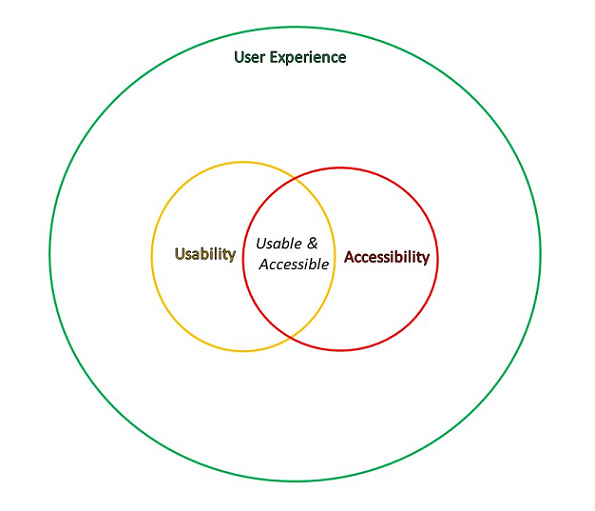Background to Users Preferences and the Web
Copied from Content Usable
Background to Users Preferences and the Web
People with cognitive and learning disabilities may not be able to effectively use web content because of the design and content choices of the author. Examples may include:
- People with impaired short term memory may be unable to recall passwords or copy access codes. They may have trouble or be unable to remember new symbols and interface paradigms;
- People with different processing speed capabilities may need additional time to understand the design relationships and volume of information on screen;
- People with language related disabilities may need simple clear language and instructions. Some may rely on supporting graphics and familiar symbols to understand content;
- People with social and/or communication disabilities may need clear literal language and may not understand metaphors or non-literal text and symbols;
- People with dyscalculia may not understand or confuse numerical references such as percentages;
- People who have issues with keeping or regaining focus, may be have difficulty completing a simple task if there are lots of distractions and interruptions. They may need headers and signposts to help them regain the context after their attention has been lost (including in multimedia);
- Many groups will need support to minimize errors and complete their task. They will struggle with complex, multi-stage processes such as filling out forms or entering data correctly or finding the content or feature that they need.
These difficulties may sometimes also be experienced by users in the general population due to environmental or situational barriers, such as when they are trying to use a website when they are distracted. For example working on a mobile device while in an unfamiliar or noisy situations can demand place addition cognitive load on all users by splitting their attention. However, for users with cognitive and learning disabilities, these difficulties are likely to be persistent and significant, so that they are unable to access content and abandon tasks.
Cognitive and learning disabilities include long-term and short-term and and sometimes permanent difficulties relating to cognitive functions, such as:
- perception, memory and attention;
- learning and orientation;
- visual, verbal and numerical thinking.
These are usually hidden difficulties and may be age related. The terminology and definitions used for cognitive disabilities varies between countries and users are less likely to have a formal diagnosis of a disability than individuals with physical and sensory difficulties. Cognitive disabilities may include intellectual impairments affecting comprehension alongside written and spoken expression. People may also experience a co-occurrence of difficulties such as dyspraxia / developmental coordination difficulties and ADHD should also be taken into account.
It should be noted that by addressing barriers to accessibility for users with cognitive and learning disabilities, improvements to digital technologies can be achieved and there is the potential to improve user experience for everyone.
